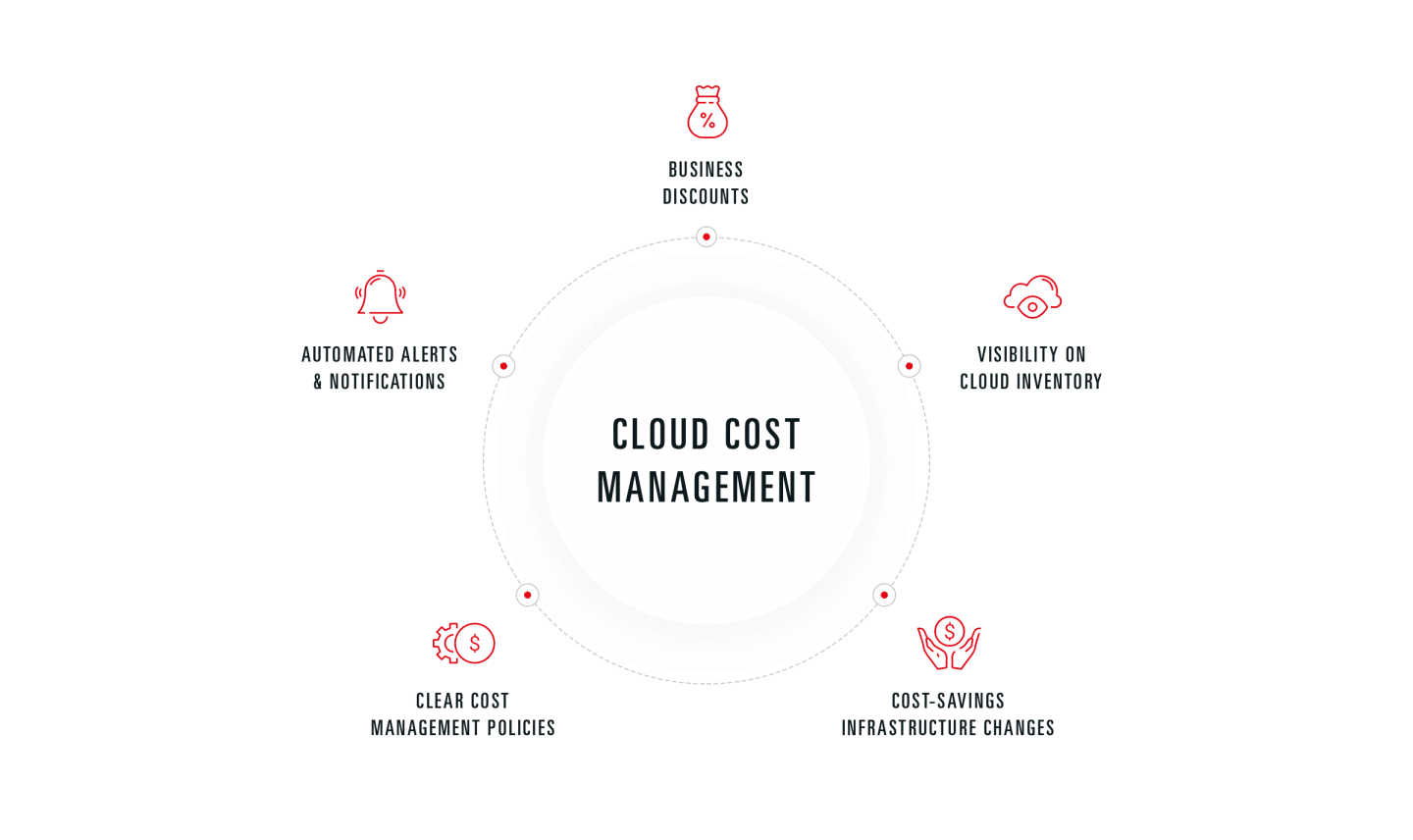Controlling Cloud Infrastructure Costs: Tips and Tricks
Track resources, set policies, explore serverless options, use discounts and set up alerts for cost monitoring. Expert advice helps.
Join the DZone community and get the full member experience.
Join For FreeComputing costs, as computing itself, should always be predictable. But in reality, cloud infrastructure costs can quickly get out of control. There are many reasons for that to happen.
Fortunately, you can learn to control those by implementing a smart cloud cost management strategy. In this article, the Sigma Software team will share some insights and tips on managing expenditures on infrastructure maintenance.
Five Ways to Design a Perfect Cloud Cost Management Strategy
There are a lot of cloud cost control practices that organizations can apply to manage costs. Here are the top 5 that will help you save your resources. Let’s take a look at each of them.
![cloud cost management]() Cloud Inventory Visibility
Cloud Inventory Visibility
One of the main reasons for the unexpected rise in cloud costs is the low visibility of cloud resources. Check your infrastructure from scratch. If some resources aren’t used, but you are still charged for them, stop instances when they’re not used. Or you can organize your idle resources into actionable workflows, such as termination or archiving.
You can also use your provider's tools, such as Google Cloud Monitoring, Azure Monitoring, or Amazon CloudWatch. Based on the data you’ll gather, you can scale instance sizes, estimate workloads, and get alerts to track unused resources. This surely will help you control your spending.
Clear Cost Management Policies
There can be a lot of people within your organization who may use the cloud very differently. That’s why, when it comes to the cloud, you need to figure out who is responsible for what. You want to know who, how, and by what rules use your cloud infrastructure.
Implementing specific guidelines will outline responsibilities and define users' rights in controlling and changing the infrastructure. These rules can and should be automated.
Define principles, write down the processes you work with the infrastructure, change and optimize it, and control costs. All teams must be involved in the processes and understand who is responsible for which part of the development cycle.
Cost-Saving Infrastructure Changes
If you are unhappy with the bills you receive from your provider, try other approaches. Consider serverless architecture.
It’s a model in which your provider takes responsibility for server running and computing resources management. In this case, your organization will be charged only for the resources you use. The company will be set only for the serverless function execution time.  The infrastructure scales up and down automatically, so you don’t need to reserve and pay for fixed bandwidth or several servers. Your organization will have as much computing power as it requires. Serverless architecture provides organizations with reduced operation time and lower costs. It prevents server operating costs such as image processing, presence detection, or access authorization.
The infrastructure scales up and down automatically, so you don’t need to reserve and pay for fixed bandwidth or several servers. Your organization will have as much computing power as it requires. Serverless architecture provides organizations with reduced operation time and lower costs. It prevents server operating costs such as image processing, presence detection, or access authorization.
Any leading Cloud provider offers serverless these days: AWS Lambda, Google Cloud Functions, and Microsoft Azure Functions.
The only downside is that you don’t have complete control over server hardware and runtime updates.
Another approach for you to try is networking.
It’s the foundation of a well-crafted infrastructure because users constantly need to be connected and transfer data. With the constant movement of data, organizations face additional network costs.
In many cases, organizations often overlook network costs. When traffic spikes occur, there is a significant increase in cloud expenses. This jump is the cost of outbound data transfer.
Keep an eye on what goes in and out of the cloud platform with tools like Data Flow Diagrams.
Discounts
Providers offer many programs with discount options that can help optimize your costs. Google, Microsoft, and AWS have discount programs that decrease the essential price of computer instances. In return, they expect you to commit to buying a certain level of resources in the future or accept availability limitations.  Large-scale enterprises can also search for some programs to drive more substantial savings. Check out AWS Enterprise Agreements, Microsoft Azure Enterprise Agreements, and Google Cloud For Enterprise Organizations.
Large-scale enterprises can also search for some programs to drive more substantial savings. Check out AWS Enterprise Agreements, Microsoft Azure Enterprise Agreements, and Google Cloud For Enterprise Organizations.
Providers also offer free credit programs to startups to meet their specific requirements. AWS Activate, Azure Free Accounts, and Google Cloud for startups.
Major cloud providers also offer free trials for various individual services, so you can test the platform's capabilities before purchasing a license. This will give you an idea of how the services work.
Notifications and Alerts
Simple here. It lets you track reports of authorization failures, cost surges, budget overruns, etc. This provides timely information about current problems with your cloud expenses so you can quickly address them. All leading providers offer cloud optimization tools for alerts and notifications.
Conclusion
The key drivers of cloud cost overruns are inefficiencies in the cloud strategy or its absence. It’s crucial to have an effective plan that will guide your organization in the cloud cost monitoring and optimization process.
In this article, we have listed the most popular strategies. If you're only starting your journey, keep in mind that these costs can sometimes be challenging to evaluate due to the complexity of the cloud infrastructure. So it’s always a good idea to meet with experts who can help you create an effective cloud-cost strategy to benefit your business.
Published at DZone with permission of Den Smyrnov. See the original article here.
Opinions expressed by DZone contributors are their own.

 Cloud Inventory Visibility
Cloud Inventory Visibility
Comments